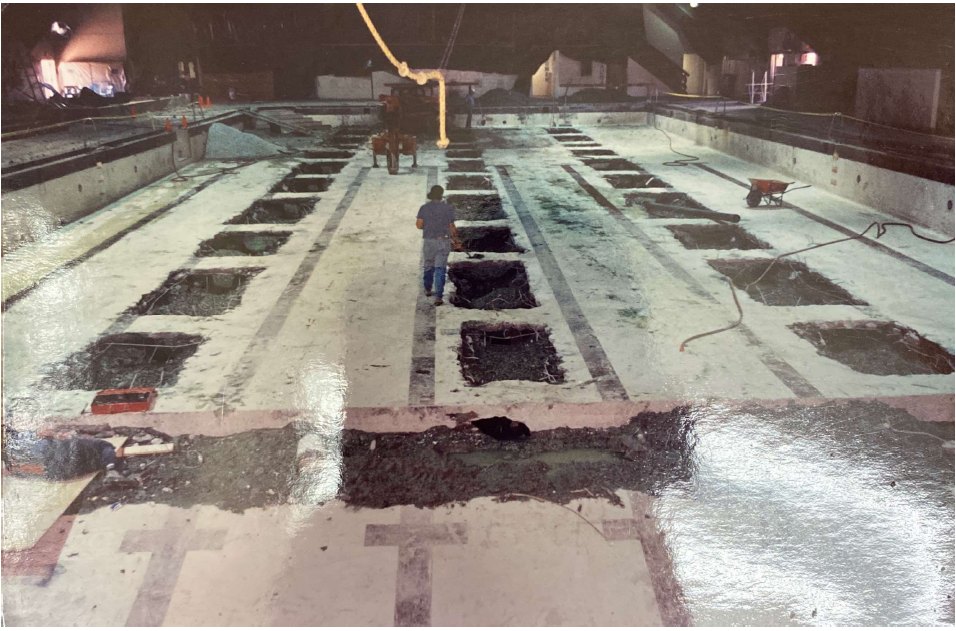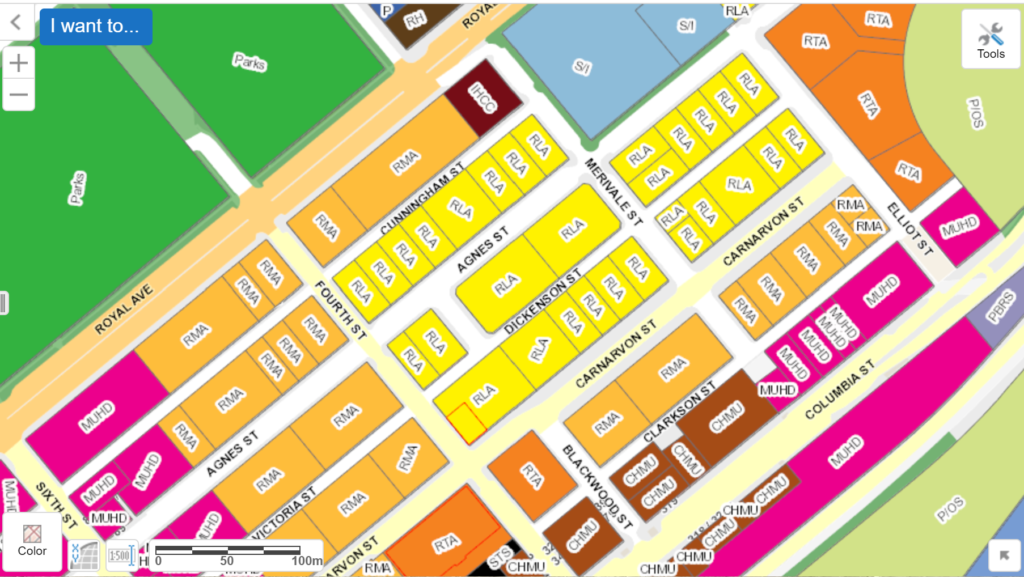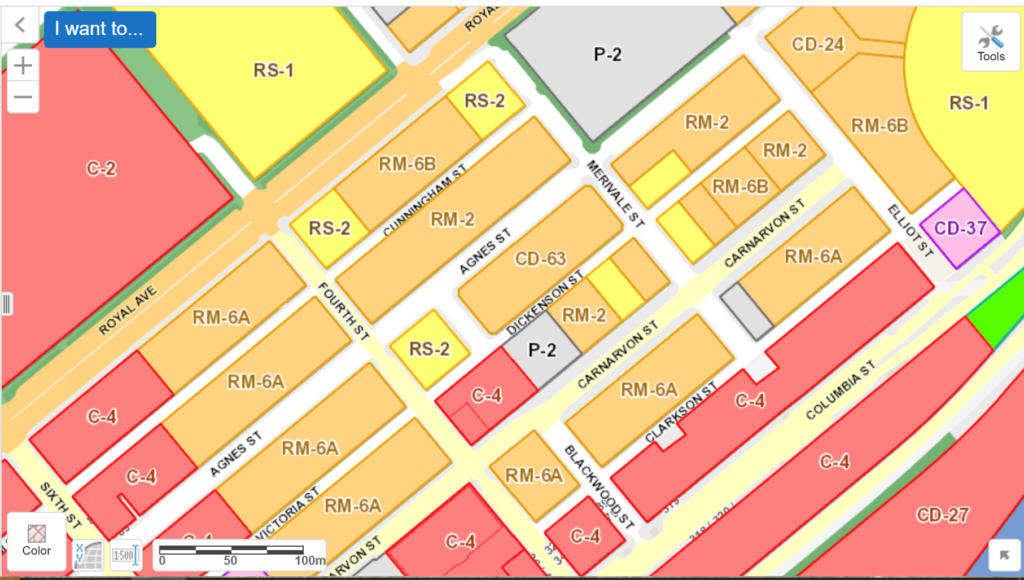Our Council meeting this week seemed like everything else this last month – little glitchy. Staff at the City have done a phenomenal job rolling with the various changes in how we delivered Council meetings, with shifting Public Health Orders and legislative requirements around electronic meetings, which included a complete review of our digital environment. This week’s glitches were not their fault, but a failure in the phone system that was felt nationwide that just happened to occur during our meeting, and our meeting while the province was beginning to flood. I’m not sure the two were related, but if you were following in Zoom and didn’t hear everything, the streamed video of our meeting does have clear audio, so you don’t have to miss any of the exciting action on our agenda. We started with reviewing a Temporary Use Permit:
TUP00027: 502 Columbia Street (former Army and Navy Store) for Emergency Homeless Shelter
This permit would allow the Purpose Society to operate an emergency shelter in the lower floor (fronting Front Street, not Columbia) of the Army and Navy Building, in which Purpose has been providing other programming for several months. The TUP will be active for 3 years, though we hope it will not be required for this long a time. The last time we issued a TUP for an emergency shelter, it was active for about 6 months.
At this point, it is a little unclear which will be funded here. Purpose has adequate funding to open an “Emergency Weather Response” shelter, which would be made available for up to 50 persons with no other shelter overnight only during extreme weather events between November and March. The only other such service in New West was downsized to 30 beds due to COVID restrictions, and is now in the process of being repurposed to provide health services on a more permanent basis. If BC Housing comes through with additional funding, this could become an “Emergency Response Shelter”, which would provide a similar number of beds on a 24/7 basis with full supports for the residents that would fill the gap until more permanent Emergency Housing is available (which we hope to see opened within 18 months).
We has a significant amount of public feedback on this through various media. Written correspondence included 44 pieces, with concerns raised related to crime and the impact on businesses, but also a significant amount of support and recognition of the pressing need for shelter, and preferably housing.
Council moved to approve the TUP, and reinforced the message to BC Housing that true 27/7 shelter with supports is the preferred model here. We have more than 100 people living without shelter in New Westminster. We have a service provider willing to step up, BC funding willing to fund, and a building owner with vacant space willing to provide appropriate space for those residents that want to come indoors, get warm, get clean, get help, it would be unconscionable for us to say no.
Business Regulations and Licensing (Rental Units) Amendment Bylaw No. 8302, 2021
We are making changes to the business Bylaws we adapted to provide extended protection to renters from demo-viction and reno-viction in light of changes by the Provincial Government to the Residential Tenancy Act. We asked for public input, it got a little media attention, but we received no feedback, so Council moved to go ahead with the changes.
We then moved the following items on Consent:
Budget 2022: Engineering and Electrical Utility Amendment Bylaw Report
As previously discussed, the Bylaws for Utility Fee changes was presented and moved by Council. Yep, utility rates are going up. Both Water and Sewer primarily because of Metro Vancouver costs going up, Electrical going up basically at the inflation rate as recommended by the Electrical Utility Commission, and Solid Waste going up because we have a couple of pressing capital costs.
Construction Noise Bylaw Exemption Extension Request: 618 Carnarvon Street
The new building that will partly encapsulate the SkyTrain downtown (reducing its noise) has been planning to do that encapsulation work for a few months, but was delayed. So the noise variance they need to do some of this work at night (when SkyTrain is not operating, for obvious reason) needs to be extended, which we are doing except for the period through the Christmas Holidays.
Construction Noise Bylaw Exemption Request: New Westminster Interceptor – Columbia Sewer Rehabilitation
That shitty sewer project on Columbia needs to work up to 4 nights in late November or early December in order to get done this year. The timing is critical because they cannot do this work when there is significant surcharge in the sewer –so they need drier weather for a short stretch. Like a root canal, it sucks, but we gotta get past this and get that sewer rehabbed.
Construction Noise Bylaw Exemption Request: New Westminster Interceptor – Sapperton Connection along East Columbia Street
This is a different phase of the same work, in a different location. Two nights some time before Christmas, they are going to do sonar inspection of the sewer line. This should not make much noise other than the idling of a couple of vehicles, but night construction work requires an exemption.
Covid-19 Task Forces: Update
This is our regular (now about once a month) update on the Tasks Forces the City setup to address specific challenges related to the pandemic and related Public Health measures. If you are curious about what the City has been doing in support of vulnerable and at risk populations, seniors and persons living with disabilities, and business and the local economy, these are the updates you want to see. Putting hope into action, as we have been doing for 18 months now.
Crisis Response Bylaw Amendments: Consultation Summary and Second Reading of Bylaws
More of the Hope and Vision stuff, the City has bundled three projects together to accelerate the development of supportive and affordable housing in the City in response to the ongoing homelessness crisis. One is giving Council some power to fast-track response City-wide in the event of a BC State of Emergency declaration, one to accelerate approval for a supportive housing project in Queensborough, and another to fast track a supportive modular housing project downtown. We sent this out for Public Consultation, and this is the report back.
We had four virtual information sessions (totaling >50 people), A Be Heard New West page (>450 visits. >150 active participants). General support for the City-wide plan, and general support for doing “something” about providing shelter for unhoused people, but local concerns about the specific locations and problem behaviours. There are also a significant number of responses fully in favour of each project.
As this involves an OCP amendment, it will go to a Public Hearing, so I’ll hold my comments until them.
District Energy Bylaw No. 8269, 2021 for First Reading
The City and the Electrical Utility are continuing to work on a District Energy Utility (DEU) for Lower Sapperton to take advantage of a Metro Vancouver sanitary sewer main (as a carbon-free energy source), in a location that can provide base load carbon-free energy to the expanded RCH and upcoming developments in the area – predominantly Sapperton Green. This single project, if fully realized, would offset community GHG emissions equivalent to the entirety of New Westminster’s Corporate Emissions. To undertake the next stage business case development, a Bylaw is required to assure new development in the area hooks up to the DEU such that space heating, cooling and/or water heating in new developments will be provided by the DEU, and sets out conditions for the relationship between a developer and the Electrical utility to let this happen.
Anyway, this is first reading, so if you have input, let us know!
Heritage Revitalization Agreement Refresh: Principles and Community Consultation
This is a very preliminary report, asking that staff go out to do public consultation on this topic that eats up a completely disproportionate amount of our Council time and staff energy, considering the minuscule impact it has on the community at large. Ultimately, the process for approving HRAs (where the City gives rezoning-like benefits to property owners in exchange for them preserving a heritage asset) is cumbersome and has been the cause of much community conflict, so clarifying the process will benefit us in reducing the effort of staff needed to manage these, and potentially the conflict in the community related to their application. So off to Public Consultation it goes, and we will try to hammer out some principles to make the process work better, because the current process is clearly making no-one happy.
Revenue Anticipation Borrowing Amendment Bylaw No. 8300, 2021
Every year, we need to set up a borrowing Bylaw to give staff the ability to dip into a line of credit in case we run out of cash waiting for the annual tax and utility bills to get paid. We spend money year round, but mostly get paid in one month in the summer, this gives us the $3 Million buffer we need to make sure we don’t run into a shot-term cash crunch.
Schedule of Council Meetings for 2022
Mark your Calendars. Here is the schedule for 2022. 20 Council meetings, 10 Workshops, and 7 Public Hearings. One meeting in Queensborough (haven’t done that in a while!) and 3 of those meetings are actually after the 2022 election, so will be a new Council.
The following items were Removed from consent for discussion:
Climate Action: 2020 Corporate Greenhouse Gas Emissions Update
We annually report out our Corporate GHG emissions, and compare to the reduction goals set out in our Community Energy and Emissions Reduction Strategy (CEERS). 2020 was the first year in included the emissions produced by contractors working for the City as part of our own emissions, but we are still almost on track to our CEERS targets. There have also been some changes to how the Province counts electricity emission factor (how much GHG emissions are related to BC Hydro supplied electricity) so our reporting numbers look a little different than previous numbers.
In short, our emissions are about 20% lower now than they were in our 2010 baseline year, where a “straight-line” reduction to our 2030 would have us at 22.5% below 2010 now. Not quite on track, but not far off. This is, however, good news. We know that the construction of the təməsew̓txʷ Aquatic and Community Centre will reduce our emissions by something like 15% when it replaces the Canada Games Pool, so that 15% is not yet counted, but is already in our budget and being built. We are certainly on track to get below our 2030 target by investing now, not by waiting or talking about targets, but by doing the work.
New Westminster School District’s 2021-2022 Eligible School Sites Proposal Report: City Response
The City is growing at the pace outlined in the City’s Official Community Plan and we are hitting the targets we committed to in the Regional Growth Strategy. More importantly, we are seeing that there is a demographic shift happening in the community, and (perhaps a reflection of the City’s Family Friendly Housing policies coming into effect) we are having an increased number of young families moving to the community, which means we need more schools.
Fortunately, the Provincial government has abandoned the absurd BC Liberal policy of only building schools for *current* need, and are giving School Districts more flexibility to apply for capital projects to meet projected capacity needs based on community OCPs and demographics, but we are already about 5 years behind (as schools under construction were mostly approved under that previous policy). So the City needs new school locations. Of course, it has been more than 100 years since New Westminster had any empty “greenfield” spaces for new schools. So we need to repurpose existing land use and build schools more appropriate for dense urban spaces.
The School District has been working on this, and we have had extensive discussions over the last little while at both a staff-to-staff level, and a Council-to-School-Board level, to see how we can help the School District achieve their goals. The Board has developed a needs assessment and an Eligible School Sites Proposal to take to the Provincial government, and have asked the City to provide support. Staff say their projections look spot on, so we are sending a note to that effect. More to come here!
Preliminary Application Review: OCP Amendment and Rezoning – 1084 Tanaka Court
A property owner in Queensborough previous approached the City about building a banquet hall on a piece of industrial-zoned property in Queensborough. They now want to build a residential (Purpose built Rental) on this property as part of a mixed-use development. This is an area (North of the freeway, near the Casino and Lowe’s) not previously envisioned for residential use, and is a pretty significant departure from our OCP. Not just an increase in density or built form, but a substantial shift in land use areas. Staff is recommending against this change, but the applicant has an opportunity to apply to Council.
This was an interesting discussion at Council, and I honestly think most of us are on the fence on this one – but I can only really speak for myself here. At first pass, this does not look like an appropriate change of land use. The property is in a light industrial area, though most of the surrounding use is more commercial. We have long supported a policy of protecting job-creation and industrial space in the City, as it is under threat form a variety of directions. Then you consider that adjacent properties and those across the street are zoned M-1 or M-2, and as such are currently permitted to be lumberyards, machine shops, or factories manufacturing anything from rubber tires to textiles. The pedestrian realm nearby is not designed for a family neighbourhood, and most services are not easily accessible. But the idea of saying no to daycare and housing when both are in such critical need in the community and the region right now puts us in a real conundrum.
Council, in a split vote, agree to allow staff to continue to work with the property owner to see if they can develop the project some more, but also expressed some concerns about it. If this proceeds, it will eventually end up in a Public Hearing, and it will no doubt be an interesting one that asks some difficult question of Council and the community.
We also had a Presentation:
Cohousing
We got a presentation from a person who lives in the Driftwood Village Cohousing Project in North Vancouver, and from a member of a burgeoning co-housing group in New West, to outline how co-housing might work in the City. A lot of this was very educational about what co-housing is and (more importantly) about what is isn’t. This is a different model than Co-op housing, and though it may include some affordability elements, it would generally not be considered an Affordable Housing model. It does however, fill as a bit of a “missing middle” niche for people who want to live in a more community-focused setting ,somewhere between a regular strata and a co-op (though they are usually structured as a Strata in the legal and financial sense. Our new OCP provides an opening to supporting Co-housing, and this presentation gave us an opportunity to learn what models might work in the Greater Vancouver context, and how we might support that model better. It also ended in Council asking staff to look deeper into how we might support such a model in the City if the opportunity arises.
Finally, we had a boatload of Bylaws, including the following for Adoption:
Bylaw Notice Enforcement Amendment Bylaw No. 8298, 2021
Municipal Ticket Information Amendment Bylaw No. 8299, 2021
These bylaw amendments support the change in the Business Licensing Bylaws around Tenant Protection, as discussed above, and were Adopted by Council.
Climate Action, Planning and Development User Fees and Rates Amendment Bylaw No. 8293, 2021
Cultural Services User Fees and Rates Amendment Bylaw No. 8294, 2021
Electric Utility Fees and Rates Amendment Bylaw No. 8295, 2021
Engineering Services User Fees and Rates Amendment Bylaw No. 8292, 2021 and
Financial Services Fees and Rates Amendment Bylaw No. 8296, 2021
These Bylaws amend the fees for 2022 for the various services provided by the City, mostly going up to match inflation. And they were all adopted by Council.

 M
M